Ok. A short but not insignificant post about a new sevice we are offering.
We can repair ANY platform escapement with ANY problem.
Prices start at £200 and run to whatever they run to. Under £1000, unlikely to be £750, probably £450 but dont be surpirsed by 550 and if its a clean and refit then your at £200. So bascily no help a at all – I apologise. Theres also a minimum charge of £60 to look at it properly and take it apart to component level before we give you the bad news on price for doing it properly, and then the “this price gets it working” conversation takes place and a fix is agreed and scheduled.
We need the WHOLE clock to do the repair if possible. If its a large heavy 19c slate or an ornately framed clock then just the movement will be enough. Only remove the movement if you are confident in doing so. And unplug it if you need to. Quite important that. If you know roughly what you are doing but need a hint or two then email or ring me for advice. Its either easy and we can sort it out in two minutes or its a “give up and bring it in when your passing”. All this assumes that postage is your preferred way of doing things.
The reason we need the whole clock is that there is a lot in the fitting of these platform escapements. Ill do a separate blog on that.
Prices vary so much by job as they can include anything from re-manufacture of the balance weel or re-jewelling to pivot holes so theres much more to go wrong that you might think and we do the job properly – we dont say “well thats ok for the moment” if it looks like its going to fail in then next few years.
If you want us to fix yours email pictures and then phone. Its not really worth having a conversation on diagnosis without some idea or what we are dealing with and I can tell a lot from a few pictures at least about the type of unit, if not the cause of the problem, However it does atually help with this as well to a degree as different clock types have typical faults you line up as the usual suspects.
The most common problem we have sees so far is balance staff breakage and/or jewel fracture. Spring damage is common with a broken staff, as is pallet wear or damage, depending on how luck you got with the bang that broke the clock. Pivots and gears are generally ok and dont need too much work, if any; its the staff, jewel points, pallets and spring in that order for the most part.
The skills and extensive experience required has now been acquired so we are very confident this will go very well in terms of adding another complimentary skill set, so much so infact that we need to limit the amount we take in or it will impact our core more general business of repairing just about any clock.
A lot of my friends think it is madness to offer a general clock repair service with such a broad range of clock types (as opposed to sticking to perhaps long case or cuckoo clocks – specialising) but its all part of the fun as far as I’m concerned and I want to keep it that way.
So, we are allowing a capacity of 5 escapements per month and these slots may be taken by jobs that come in and are discovered to need this attention mid-job as has been the case so far – usually with a replacement solution as opposed to a fix.
Thats now changed to a fully tooled and experienced craftsman with decades of experience at the highest end of things. He can fix a Rolex if you take a hammer to it. Genuinely. Totally bad example of course because Rolex themselves are even better tooled up than us so that would be the place to go, however, if gives you and idea of where we are.
If you want your platform escapement repair provided by us then dont wait. Order it now and theres less chance you will get a “no Im sorry I cant store anymore in my small workshop” or “yes, about 6 months. Sorry.”
I have no idea what happens next. Could be nothing or the phone might explode with phone calls. More probably Ill l will get the really difficult frustrating profit risk work nobody else will take. Or trade enquiries.
I hate trade enquiries. Fix your own bl***** clock if you put “Clock Fixa”on your business card. If you think you probably cant fix the real problem then tell the customer and stop wasting their time with your voyage or discovery into your own incompetence. I have discovered over the years, honestly, to my surprise, that Im better than most and one of the best. Nobody can touch us on cuckoo clock repairs standard and experience backed up by our supply and UK wide accreditation from Loetscher in Switzerland, we are great on grandfather clocks, prepared to take on 20th century overly complicated cheaply producted post war clocks and, as yet, weve not turned down and job and completed to delivery or resolution.
I cant say this doesnt lead to some pretty pressurised situations but its worth it. At the moment Ive got two massive station clocks with broken (split to 3 pieces) faces, rusty iron bezel frames and movements that are industrially joined to the iron frame to ensure structural strength under nazi bombing. So ive got a, finish (rust) problem, a ceramic boding solution to apply on a huge jig, reinforcement of the structure and a high power electricity phase controlled movement. And I have to do it so that its accessible for seasonal time changing. Is that clock repair? I don care because I have a picture in my minds eye of what this will look like and I like the look of it!.
Then I have a Secticon electro-mechanical movement to service – a complex and unique movement. The clock case / dial / hands are together a breathtaking piece of iconic 60’s form and this clock is going to be very sought after when that genre recycles properly and becomes the standard for the few years. And then and then and then and so on and so forth.
Its a jungle out there – even in clock land. Thats why this is a temporary service. We are testing it nationwide as opposed to just offering it to existing customers. If its too much then we will just stop. If its too little, it doesnt matter and if its just right then we will keep it going. So, nows a good time as we wont let anyone down whos already ordered if we suddenly pull the plug on the whole thing. I suspect it will be months but with the speed of the internet it could be days quite frankly.
I left that paragraph to the end to filter out all the “might be interested” people who gave up half way through and you….have a problem you need fixed.

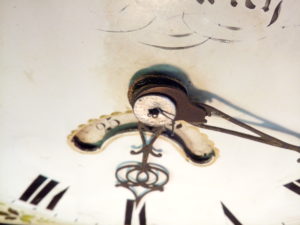
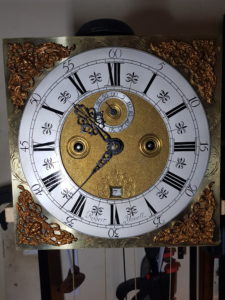

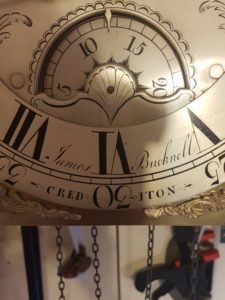
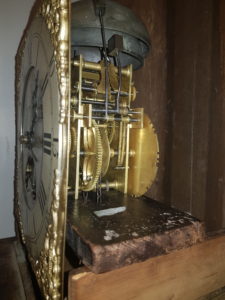

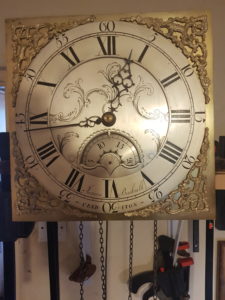
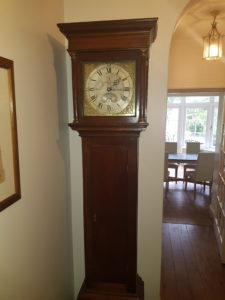
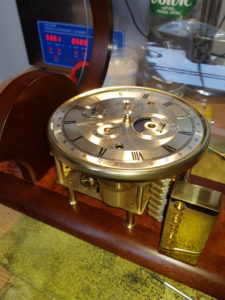

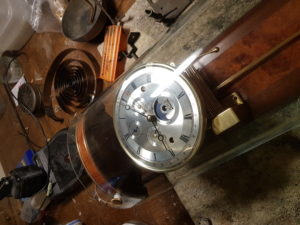
Recent Comments